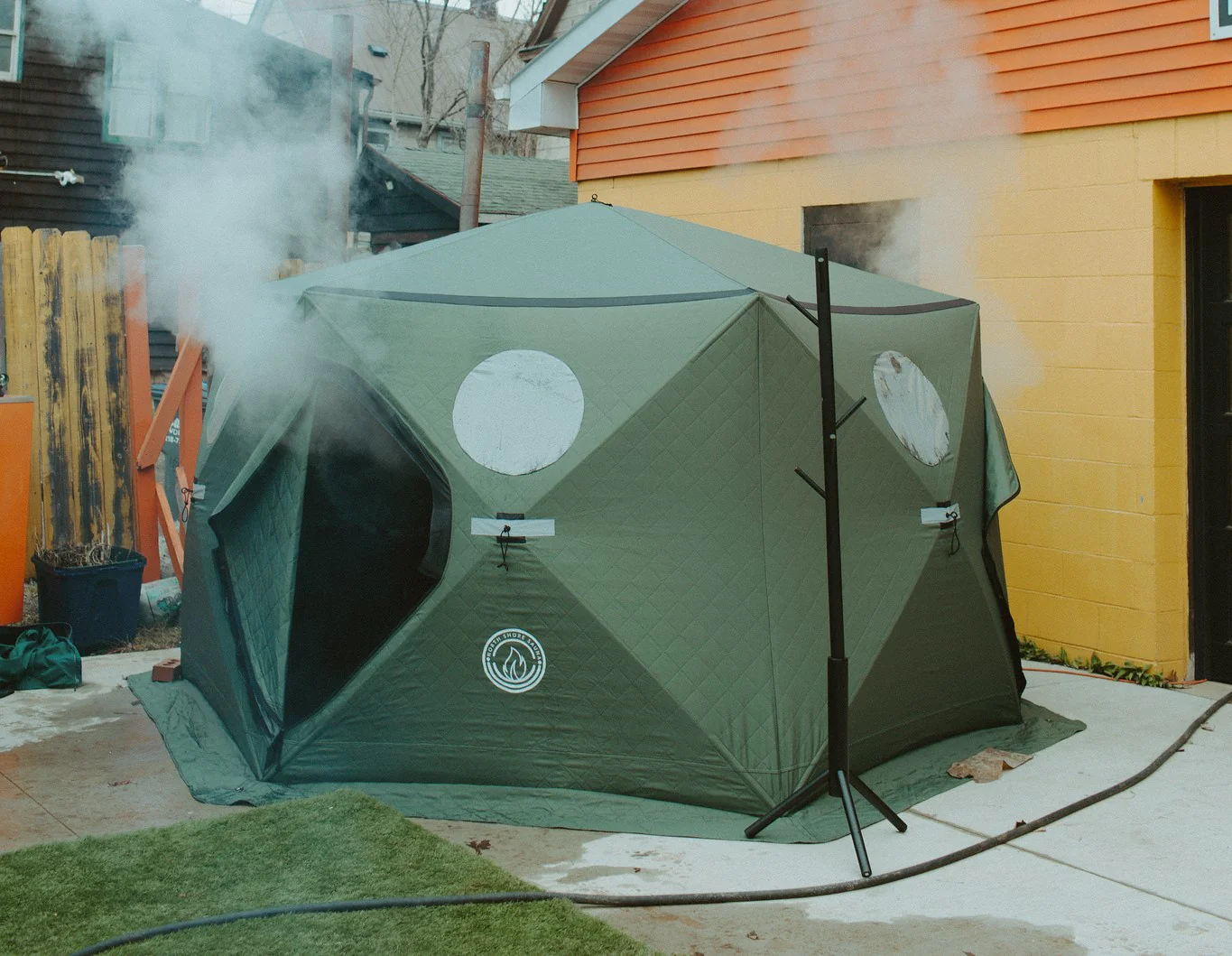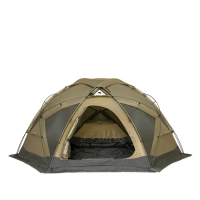Cart
Loadding...
Sauna Tent vs. Sauna Guide: Difference & Which Is Better
Mar 15, 2024

Introduction:
Saunas have long been recognized for their relaxation and health benefits. With the popularity of portable sauna tents and traditional saunas, it's important to understand the differences between the two options and determine which one is better suited to your needs. In this comprehensive review, we will explore the features, benefits, and considerations of sauna tents and traditional saunas, helping you make an informed decision. Whether you're looking for a portable and convenient sauna experience or a permanent fixture in your home, this article will provide valuable insights to guide your choice.
1. Sauna Tents: Portable Relaxation
Sauna tents are portable structures designed to provide a sauna experience anywhere you go. Here are the key features and benefits of sauna tents:
a. Portability: Sauna tents are lightweight and easy to transport, making them ideal for camping trips, outdoor adventures, or temporary sauna setups. They can be conveniently set up and dismantled, allowing you to enjoy a sauna experience on the go.
b. Quick Assembly: Sauna tents are designed for easy setup, typically taking just a few minutes. They often feature a collapsible frame and heat-resistant enclosure, making them hassle-free to assemble without the need for permanent installation.
c. Space Efficiency: Sauna tents are compact and space-efficient, making them suitable for small living spaces or situations where a permanent sauna may not be feasible. They offer enough room for an individual or a small group to sit or lie down comfortably.
d. Cost-Effective: Compared to traditional saunas, sauna tents are more budget-friendly. They provide a cost-effective way to enjoy the benefits of saunas without the expense of building a permanent sauna room. They also require less maintenance and can be easily stored when not in use.
2. Traditional Saunas: Established Relaxation
Traditional saunas, also known as Finnish saunas, have been used for centuries. Here's what you need to know about traditional saunas:
a. Permanent Installation: Traditional saunas are usually built as permanent fixtures in homes or dedicated sauna rooms. They require professional installation and may involve construction or renovation work. Once installed, they become a permanent feature of the property.
b. Heat Source: Traditional saunas typically use a wood-burning stove or an electric heater to generate heat. The heat is transferred to the sauna room through rocks or other heat-retaining materials. This traditional method offers a unique and authentic sauna experience.
c. Heat Retention: Traditional saunas are known for their excellent heat retention. The materials used in their construction, such as thick wood panels and insulation, help to maintain high temperatures and create a consistent sauna environment.
d. Capacity and Customization: Traditional saunas can accommodate larger groups of people compared to sauna tents. They offer options for customization, such as different bench heights and various seating arrangements. Traditional saunas also provide the opportunity to incorporate additional features like sauna accessories, lighting, and sound systems.
3. Which Is Better: Sauna Tent or Traditional Sauna?
The choice between a sauna tent and a traditional sauna depends on your specific needs and preferences. Consider the following factors:
a. Portability vs. Permanence: If you value portability and the ability to enjoy saunas anywhere, a sauna tent is the better option. Sauna tents are versatile and can be set up and used wherever you go. On the other hand, if you prefer a permanent sauna experience and have the space and resources for installation, a traditional sauna may be more suitable.
b. Space and Capacity: Sauna tents are space-efficient and ideal for individuals or small groups. If you anticipate using the sauna with larger gatherings or want a more spacious sauna experience, a traditional sauna with its larger capacity may be the better choice.
c. Heat Retention and Authenticity: Traditional saunas excel in heat retention and provide an authentic sauna experience with their use of wood-burning stoves or electric heaters. If you value the traditional sauna ambiance and the unique heat transfer properties of rocks or other heat-retaining materials, a traditional sauna is the preferred option.
d. Budget and Maintenance: Sauna tents are generally more affordable and require minimal maintenance. Traditional saunas, due to their permanent installation and potential construction costs, can be more expensive. They may also require regular maintenance and upkeep to ensure optimal performance.
Conclusion:
In the sauna tent vs. traditional sauna debate, the choice ultimately depends on your lifestyle, preferences, and budget. Sauna tents offer portability, quick assembly, and cost-effectiveness, making them ideal for those seeking a sauna on the go or in small living spaces. Traditional saunas, with their permanent installation, heat retention, and customization options, provide an authentic and immersive sauna experience for those who prioritize a dedicated sauna space. Consider your specific needs, available space, and desired sauna experience to make an informed decision. Whichever option you choose, the relaxation and health benefits of saunas await you.
- Contact Us
-

About Pomoly
Pomoly is a leading camping brand specializing in hot tents and tent stoves. We are camping life explorer, Follow Page / Join Group, let's make camping enjoyful together!
Working Hours
Mon-Fri, 09:00 - 17:00

- Company Info
- NEWS
- About us
- Pomoly Name
- Leave-No-Trace
- Contact Now
- Facebook Group
- YouTube Learning
- Product News
- Contact Us
- Topic Collections
- Policies & Terms
- Payment Policy
- Shipping Policy
- Return & Refund
- Privacy Policy
- Terms of Use
- Tax Policy
- Website Disclaimer
- Safety Disclaimer
- Warranty Policy
- Promotion Policy
- Pre-order Policy
- INTELLECTUAL PROPERTY RIGHTS
- Dealers Agreement And Terms
- Become Affiliate
- User Center
- Forget Password
- My Orders
- Tracking Order
- My Account
- Register
- Popular Searches
-
Tipi Tents Camping Tent Hammock Stove Camping Camping Pellet Stove Circle 6 Titanium Water TankDome X Locomotive 20 LEO 2 camping tent T-Brick 2.0 T1 2.0 tent stove Dweller wood stove Oroqen 2.0 Chimney Water Tank Lumberjack STOVEHUT Bromance 70 Tipi Pomoly Coupon Baker Oven Stove Titanium elbow Fire Pits Tent Stove titanium Stove Outdoor Pellet Stove
keebon pellet stove







